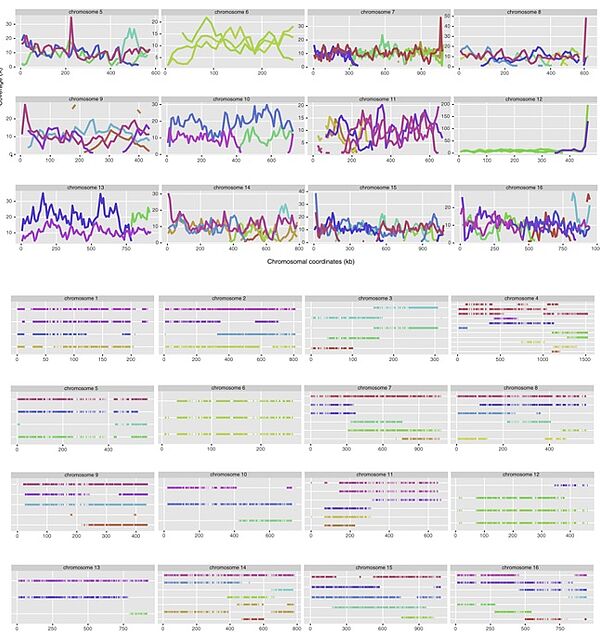Phased polyploid genomes provide deeper insight into the multiple origins of domesticated Saccharomyces cerevisiae beer yeasts.
Omar Abou Saada, Andreas Tsouris, Chris Large, Anne Friedrich, Maitreya J Dunham, Joseph Schacherer.
Yeasts, and in particular Saccharomyces cerevisiae, have been used for brewing beer for thousands of years. Population genomic surveys highlighted that beer yeasts are polyphyletic, with the emergence of different domesticated subpopulations characterized by high genetic diversity and ploidy level. However, the different origins of these subpopulations are still unclear as reconstruction of polyploid genomes is required. To gain better insight into the differential evolutionary trajectories, we sequenced the genomes of 35 Saccharomyces cerevisiae isolates coming from different beer-brewing clades, using a long-read sequencing strategy. By phasing the genomes and using a windowed approach, we identified three main beer subpopulations based on allelic content (European dominant, Asian dominant, and African beer). They were derived from different admixtures between populations and are characterized by distinctive genomic patterns. By comparing the fully phased genes, the most diverse in our dataset are enriched for functions relevant to the brewing environment such as carbon metabolism, oxidoreduction, and cell wall organization activity. Finally, independent domestication, evolution, and adaptation events across subpopulations were also highlighted by investigating specific genes previously linked to the brewing process. Altogether, our analysis based on phased polyploid genomes has led to new insight into the contrasting evolutionary history of beer isolates.

